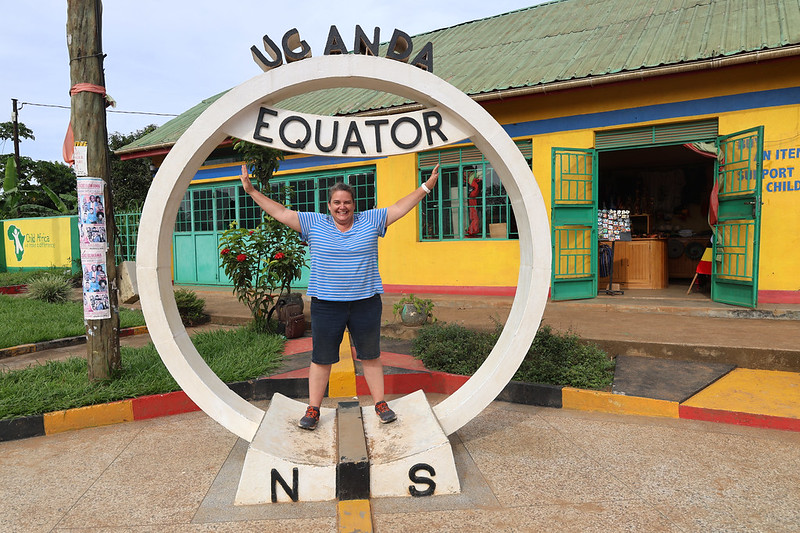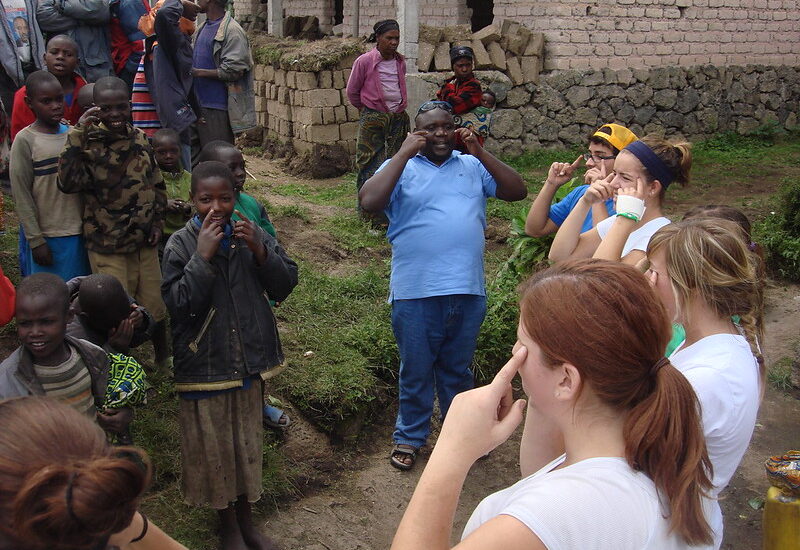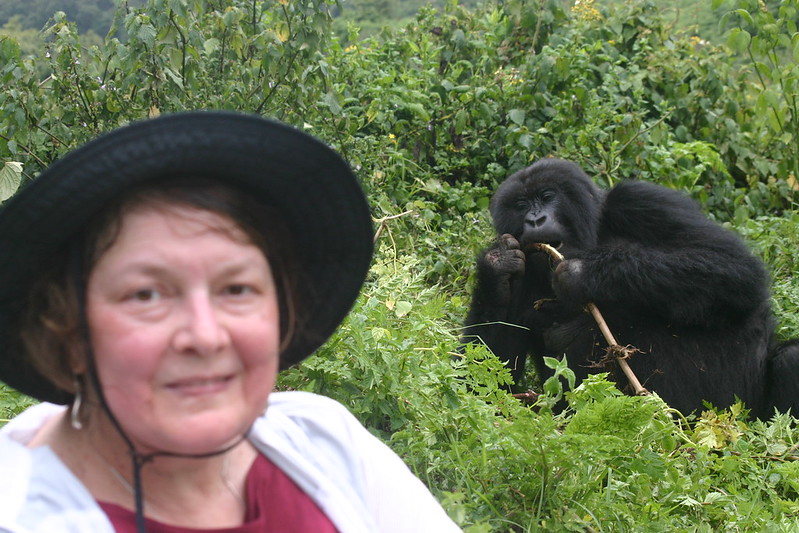Which country is safer, Uganda or Rwanda? When planning a trip to East Africa, safety…
Uganda National Theatre
Uganda National Theatre – Uganda national cultural centre.
Great live music, cinema, dance, and drama are scheduled at the Uganda National Theatr, also known as the Uganda National Cultural Center or National Theatre, in the auditorium. Bars, restaurants, and nightly outdoor events such as drumming sessions, comedy shows, and jam sessions are all present.
Appreciate the high caliber musical, cinematic, dance, and theatrical offerings at the theater; yet, the majority of visitors come for the well-liked, complimentary outdoor activities. On a comedy night, grab a chair and a beer and enjoy some unstructured open-stage jamming, infectious Afro-fusion grooves, and underground hip-hop. Additionally, there is a fantastic assortment of African and Ugandan crafts, as well as reasonably priced mementos from Uganda.
Additional Activities in Kampala: Visit the Idi Amin Torture Chambers (Lubiri Blange)
The Lubiri Mengo Palace of the King of Buganda is home to the Idi Amin torture chamber. This room was constructed as an armory to better protect the area from gunshots. Aside from that, Idi Amin had assumed presidential duties for Uganda throughout his brief tenure as ruler.
The national mosque of Gadhafi
Situated atop Kampala Hill in the Old Kampala neighborhood of Kampala, Uganda, lies the Uganda National Mosque. When finished in 2006, it can accommodate up to 15,000 worshipers in the seats, 1,100 more in the gallery, and 3,500 more on the terrace.
Nakasero marketplace
Located at the base of Nakasero hill in Kampala, Uganda, is the Nakasero Market. It offers affordable electronics, shoes, clothing, and fresh food. The market at Nakasero is 50 meters off of Entebbe Road. It is among the largest markets in the core business district of Kampala.
![]()
The royal tombs of Kasubi
Four Kabakas and other members of the Baganda royal family are buried at the Kasubi Tombs in Kampala, Uganda. As a result, the location continues to be significant for the Ganda people’s politics and spirituality and is a noteworthy example of traditional architecture.
The temple of Baha’i
There are only nine Bahá’í temples worldwide, and the Bahai Mother Temple of Africa, also called the Mashriqu’l-Adhkar, is the sole one on the continent. The distance between the hilltop shrine and Kampala, the Ugandan capital, is roughly three kilometers (two miles).
It is unclear why Uganda was selected as the site for the first African temple, given the significant number of adherents in neighboring nations like Chad and Kenya. It is documented that in 1951, English and Iranian believers of the faith traveled to Uganda with the intention of introducing Bahá’í to the local populace.
In Uganda, there were more than a hundred Bahá’ís by 1952. The pioneers departed the following year to propagate the faith throughout the continent. After six years, the Bahá’í Intercontinental Conference for Africa was convened in Kampala to commemorate the laying of the foundation stone for the first and only Mother Temple of Africa.
The Martyrs’ Shrine at Namugongo
The shrine dedicated to the Namugongo martyrs, where over twenty Catholic and Anglican martyrs were burnt alive in June 1886 at Kabaka Mwanga’s orders, is located about 15 km east of Kampala. As a result, on June 3rd of each year, Christians from all over the world, including eastern and central Africa, converge on Namugongo to honor the martyrs and reaffirm their faith.
In honor of the martyrs, a church was built in the style of a native Baganda hut, or akasiisiira. 22 copper pillars, symbolizing the 22 Catholic martyrs, support the structure. The location of Charles Lwanga’s burning on June 3, 1886, lies beneath the altar in front of the church’s main entrance. Lwanga was the head of the Catholics.On August 2, 1969, Pope Paul VI dedicated the church.
Monument to National Theatre
Great live music, film, dance, and drama are scheduled at the Uganda National Cultural Center, also known as National Theatre, in the auditorium. Bars, restaurants, and nightly outdoor events such as drumming sessions, comedy shows, and jam sessions are all present.
Ugandan Parliament
The public has access to Uganda’s parliament. Visit this magnificent edifice or observe the legislators at work, which is open Tuesday through Thursday from 2:00 to 4:00 p.m. Make sure you are appropriately attired, have a current identification card, and approach the public relations department to obtain authorization to schedule a visit to the Ugandan Parliament building.
Kasubi’s Royal Tombs in Buganda
The Buganda Kingdom’s kings and members of the royal family are buried in the Kasubi Royal Tombs. Because of the Kasubi Tombs’ importance to the Kingdom, UNESCO listed them. With its spectacular grass thatched structure, which was first constructed for Kabaka Mutesa I as a palace in 1882 and later converted into a burial place upon his death two years later, the Kasubi Tombs give visitors the feeling of being in a rural village.
Traditional African Markets in Kampala, Uganda
artisan villages, also known as vibrant artisan markets, are scattered across Kampala City. Vibrant products like prints, baskets, paintings, ceramics, jewelry, and much more are available at these markets.
Certain venues, like the Craft Village behind the National Theatre and the Craft Center on Buganda Road, are permanent, but others are weekly or monthly events. Two examples of these are in Makindye, a suburb of Kampala, and one in front of the railway station in the city center. Have the opportunity to speak with the artists and even request that they create something specifically for you.
The Museum of Uganda
The oldest museum in East Africa was founded in 1908 and is called the Uganda Museum. A striking reminder of Uganda’s colorful past, ethnological and natural history exhibits at the museum showcase the country’s rich cultural legacy. It also has a selection of freely playable traditional musical instruments.
Eateries Serving Local Foods
There are many high-end restaurants in Kampala that provide a distinctive, elegant dining experience focused on regional Ugandan cuisine. It produces flavorful, simple food that is both delicious and visually stunning by utilizing premium produce, fresh and natural flavors, and skillful technique. If you want to sample real Ugandan food in a way that deviates from the norm, try one of these restaurants.
Visual Arts and Exhibitions
The Kampala arts and gallery scene is booming, with a wide variety of gifted artists exhibiting remarkable and unique artwork, including paintings, crafts, prints, and more. When you purchase anything for your house or a loved one, support the artist. Art galleries are a great venue for artists and art enthusiasts as they concentrate on marketing and displaying.
Ugandan Riders of Bodas
Uganda National Theatre: Riding a boda boda is the most genuine way to see this metropolis. As a passenger, a boda boda is like a motorbike taxi; the rider will show you around the entire city, avoiding the trouble of having to climb all the hills so you can arrive quickly and hassle-free to see the city from different perspectives. Boda bodas got their name from the Kenyan border crossing from Uganda to Kenya; they were previously known as bado boda. Despite saving you time from Kampala traffic, they are unsafe.
Wandegeya Marketplace
Wandegeya Market is situated in Kampala’s school district. This market, which features fresh vegetables, hairdressers, boutiques, and offices, exudes a youthful vibe. In addition, it is the birthplace of the fabled Rolex and TV Chicken, two of Kampala’s most well-known street dishes, which include an omelet, raw tomatoes, and grilled chicken combined with fries and a variety of vegetables, including green pepper, tomatoes, cabbage, and carrots, respectively. The Rolex, the TV Chicken, or both should be the reason you visit Wandegeya if you visit at all.
The Buganda Kingdom Parliament Mengo Bulange
The parliament and executive branch of the Buganda Kingdom is called Bulange. Before the meetings relocated to the grass-thatched building, they used to be held under trees. When Ssekabaka Mutesa returned from his exile in Scotland in 1955 with a sketch of his ideal structure, construction on Bulange officially started. 1958 saw its completion.
It’s a useful resource for learning about Buganda’s history and culture. In light of the Buganda people’s customs, women should avoid wearing pants when visiting this location. For information about Uganda’s national theater and activities in and around Kampala, get in touch with Monumental Expeditions and Safaris.


